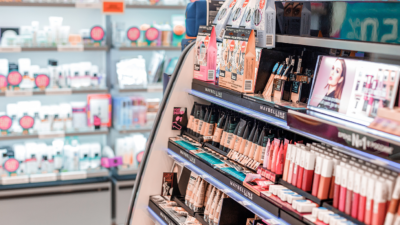As the retail industry continues to evolve, both retail landlords and tenants are reconsidering what consumers want from a brick-and-mortar shopping experience. With a never-ending parade of ‘disruptors’ entering the retail landscape, one thing is becoming clear: landlords must view their retail tenants as partners who can help them make sense of the variable consumer and market trends that are transforming the industry.
So, how can landlords better support their tenants while enlivening their retail identity, staying relevant and driving value?
Omnichannel Over Any Other Channel
Consumers spent over $500 billion shopping online with U.S. retailers in 2018, while studies show that Canadians spend an estimated $2,748 a year shopping online, buying everything from clothing, to auto parts, to furniture and large appliances. However, online shoppers often end up in stores to either collect or return items. The ‘pick-up’ experience is a great example of how e-commerce is directly impacting retailers’ brick-and-mortar strategies as they don’t want to lose customers to a cumbersome in-store pick-up or return process.
Retailers are increasingly looking for flexible store configurations that will allow them to create designated areas for people to return or pick-up online orders, especially for items that are large or bulky. Easily accessible storage areas for online orders, and designated entrances for online shoppers, are methods that landlords and retailers can implement to ensure a seamless customer experience.
Retailers are also looking for ways to easily add customized in-store amenities that will increase dwell time and add an experiential element to the in-store experience. Landlords who help tenants curate their space take the guess work out of the equation for retailers who want to test market new products or amenities, refresh their identity and generate buzz.
Make Multi-channel Marketing a Team Mission
Landlords often wait for retailers to lead the way when it comes to showcasing and promoting their individual brands, but landlords should consider how their mall’s website, social media channels and mobile engagement apps can be used to help support retailers’ marketing efforts. A digital strategy that encourages customers to engage with websites and social media channels can help promote special events and sales so that individual retailers aren’t left doing this promotional work on their own. Concierge-style mobile apps can also help landlords and tenants engage with customers and employees, while promoting sales, events, amenities and specialized merchandise.
Consider the Community
Landlords who look for opportunities to engage with the local community can refresh their retail identity and attract new tenants, while increasing dwell time and shopper loyalty. The Colliers International Real Estate Management Services (REMS) team at Lansdowne Centre in Richmond, B.C., runs year-round programming that includes a drive-in movie series and Lunar New Year festivities. As a result of positioning themselves as Richmond’s community shopping center, Lansdowne was able to land T&T Supermarket as one of their anchor tenants.
Landlords need to consider how to engage with the surrounding community and then position their retail asset, and their tenants, accordingly. In a mixed-used development? Dog-walking services, fitness classes or a farm-to-table courtyard with cook-your-own facilities are all great ways to engage with the local community. Have a social media savvy customer base? You may want to consider using public spaces within the mall for interactive events that invite social media ‘moments’. Experiential zones that feature organic produce or zero waste clothing speak to communities that prioritize sustainability, and health and wellness tenants can offer fitness classes in local parks. Enhanced community engagement supports tenants, enlivens the mall’s identity and helps your asset find its place in the community.
Shake Up the Shopping Center Status Quo
As Colliers explored in the Spring 2019 U.S. Retail Spotlight Report, landlords are recognizing the benefits of having coworking spaces in their shopping centers to fill vacancies, drive foot traffic and enliven the tenant mix.
In addition to coworking spaces, pop-ups or seasonal kiosks are another way to engage new tenants, including digital native brands that are looking to make the leap into having a physical space without locking themselves into a long-term commitment. Pop-up locations also work for established retailers who want to showcase specific merchandise in a smaller space. Colliers REMS introduced several tenants to Cherry Lane Shopping Centre in Penticton, B.C., through seasonal pop-ups. Four of these tenants are now working with Colliers REMS to secure permanent leases in the mall.
A few other options are available to help keep the tenant mix fresh and dynamic. One is using flexible or shorter-term leases, to help support retailers who are beginning to experiment with having physical locations or who want to test out new markets. Landlords are increasingly becoming more creative in deal structure to accommodate the evolving retail landscape.
The next is to move existing tenants around to create a better flow for both retailers and customers.
Although retail’s rapid pace of change shows no sign of slowing down, landlords who view their retail tenants as partners will be better able to make sense of the disruptors and market trends that are transforming the industry.
About the Author:
Alanna Cantkier brings more than 20 years of focused retail leasing experience and provides long-term strategic planning to retail leasing and knowledgeable direction for new development projects including working with construction project teams, overseeing tenant renewals and developing relationships with retailers and brokers alike.

 Colliers Insights Team
Colliers Insights Team
 Nicole Larson
Nicole Larson
 Anjee Solanki
Anjee Solanki